Table of contents
Green spelt meal ( organic) is the meal made from spelt grains ( Triticum aestivum ssp. spelta) that are harvested early and then dried. It is characterized by a strong, aromatic, smoky taste and a grainy consistency.
Using green spelt meal in the kitchen:
What is green spelt meal? Green spelt meal is coarsely ground, crushed green spelt. The crushing makes the meal easier to process than the whole grain, but at the same time retains the nutty aroma and the slightly firmer consistency of the green spelt. This is why it is quite popular in vegan and vegetarian cuisine.
Green spelt meal is particularly suitable for stuffing vegetables (e.g. for Mediterranean stuffed fennel with green spelt), for stews and casseroles. It is known in vegetarian cuisine as a meat substitute. Bolognese or patties made from green spelt meal are popular. The meal can also be used to make dumplings. Spreads made from green spelt meal (with onions, garlic, vegetable stock and spices) are also popular. There are numerous recipes with green spelt meal (green spelt meal recipe) as well as with whole green spelt, which is often used as a side dish. As an alternative to green spelt meal, you can use spelt rice (raw), couscous, bulgur, kamut or millet. Green spelt tastes similar to cooked wheat and less like white rice. 1
Can you eat green spelt meal raw? It is advisable to soak the ground grains before use, otherwise they are very hard. Alternatively, green spelt flakes can be eaten unprocessed. However, it cannot be eaten raw, as green spelt is dried at high temperatures after harvesting, which means that the raw food quality and germination capacity are lost (not raw).
Whether green spelt flour is suitable for baking on its own is a matter of debate and opinion. However, the meal is often added to baked goods because people value its taste and ingredients. 3
Vegan recipe for green spelt roast with green spelt meal:
Ingredients (for 4 people): 400 ml vegetable stock, 200 g green spelt meal (organic), 1 tbsp thyme, 80 g breadcrumbs, 40 g grated walnuts, 3 tbsp yeast flakes, 1 leek, 2 carrots, 2 onions, 40 g margarine (vegan), 2 tbsp flour (e.g. wholemeal spelt flour), a little salt, pepper and nutmeg.
Preparation: Peel and grate the carrots, cut the leek into thin slices, peel and chop the onions. Melt vegan margarine in a pan and sauté the green spelt meal. Add the chopped vegetables and continue to sauté. Deglaze everything with vegetable stock and bring to the boil briefly. Then simmer and stir occasionally. After 15 minutes, turn off the heat and allow the mixture to swell for another 15 minutes. Then add the remaining ingredients, season and mix well. Form the mixture into a roast and place in a casserole dish. Bake in a preheated oven at 180 °C top/bottom heat for 40 minutes. After baking, allow to cool briefly and enjoy the vegan green spelt roast (e.g. with a salad or a vegetable garnish).
Vegan green spelt recipes can be found under the note: " Recipes that have the most of this ingredient ".
| Not only vegans or vegetarians should read this: Vegans often eat unhealthily. Avoidable nutritional errors. |
Shopping - where to buy green spelt meal?
Green spelt meal can be found occasionally at major retailers such as Coop, Migros, Denner, Volg, Spar, Aldi, Lidl, Rewe, Edeka and Hofer (as: green spelt meal). However, the meal is not part of the standard range everywhere. More often, you can buy the whole grain; however, this is not raw either. Meal can be found increasingly in organic shops, organic supermarkets (e.g. Alnatura or Denn's Biomarkt), Health food stores, online shops and sometimes also at weekly markets. In some organic shops you also have the option of having the whole grains freshly ground. The groats are in season all year round. Green spelt groats are vegan, but not raw. Organic quality is often found, as spelt and its products, including green spelt groats, are widely used in organic farming.
Making your own green spelt meal:
How do you grind green spelt? You can make the meal yourself using a grain mill. To do this, put fresh green spelt grains in the mill, select a coarse setting and grind the grain. Since the preparation is quick and easy, it is recommended to keep the whole grain and grind small amounts directly when needed, because the grain has a longer shelf life in unprocessed form.
Green spelt groats can be prepared in exactly the same way as green spelt, but the groats need a slightly shorter cooking time. For 200 g of green spelt groats, you should use around 650 ml of water. If you want, you can add ½ teaspoon of salt and ½ tablespoon of rapeseed oil. Mix everything well, put everything in a sufficiently large pot and bring to the boil. Then simmer the green spelt groats on a low heat with the lid closed for around 10 to 15 minutes, stirring occasionally.
Storage of green spelt (ground):
Green spelt can be stored as a whole grain for up to a year under the right storage conditions. The grinding process releases the fat and enzyme-rich fractions contained in the grain, which is why flour and ground grain are slightly more perishable. 4 Like all types of grain, ground green spelt should be stored in a dark, dry and cool place.
Ingredients - Green spelt meal nutritional values - Calories:
Green spelt meal contains 347 kcal, 73 g carbohydrates, 12 g protein and 2.7 g fat per 100 g. The values are similar to those of other types of grain (e.g. whole wheat flour or hulled barley). Compared to sweet lupin meal, for example, the proportion of carbohydrates is higher, while there is less fat and protein (40 g carbohydrates, 36 g protein and 9.7 g fat per 100 g lupin meal).
The ingredients of green spelt do not differ significantly from the nutritional values of spelt. However, the proportion of total fat and macro and micro nutrients tends to be higher in green spelt than in mature spelt. The sodium content can also vary in some varieties. 5,6
The complete ingredients of green spelt meal, the coverage of the daily requirement and comparison values with other ingredients can be found in our nutrient tables. In the article Nutrients explained you will get a detailed insight into the topic.
Health aspects - Green spelt effect:
Is green spelt meal healthy? / Is green spelt healthy? Compared to ripe grain, green spelt tends to contain higher levels of biologically active substances with health-promoting effects because it is not yet fully ripe. However, there are often variations depending on the variety. 6 Since variety is important for a balanced diet, it is an advantage not to commit to just one particular type of grain - if you prefer whole grain products.
Dangers - Intolerances - Side effects:
Green spelt meal contains gluten like wheat, rye and barley. Neither green spelt nor meal or green spelt flour is gluten-free, which is why people with gluten intolerance or celiac disease should avoid it. 7 You can find out more about celiac disease and gluten intolerance in the article on soft wheat semolina. However, spelt and green spelt can be a good alternative for people with wheat intolerance (see spelt, raw).
Folk medicine - naturopathy:
According to traditional Chinese medicine ( TCM), green spelt has a tonic effect on blood and Qi and is said to dissolve moisture. 8
Occurrence - origin - ecology:
Since green spelt meal is made from spelt, you can read many aspects of the following chapter on occurrence, origin and cultivation in the associated article ( spelt, raw). However, special features of green spelt, and based on this, of green spelt meal, are mentioned here.
Cultivation - Harvest:
Green spelt meal - what is it? Green spelt meal is meal made from green spelt (i.e. ground green spelt). Green spelt - what is it? or what is green spelt made of? Green spelt is raw spelt harvested when half ripe. If you want to make green spelt meal, you have to harvest the raw grain earlier (in the transition between milk ripeness and dough ripeness or early dough ripeness 6,10,11) instead of waiting until the grain is ripe. The early harvest has the advantage of extending the harvest time and protecting the harvest from bad weather, especially in regions with short and wet summers.
Green spelt used to be produced on a small scale. The green spelt was harvested with a sickle, bundled and passed through a rake that separated the ears from the stalks. The ears were dried in special kilns over a beechwood fire. 9
Ecological aspects:
In the past, green spelt was used primarily as an emergency food. The spelt grain was harvested early to prevent crop losses due to bad weather. Today, the ecological advantages of organic spelt cultivation are increasingly valued 2 and a certain amount is deliberately harvested before it is ripe.
Industrial green spelt production:
Before 1970, green spelt was rarely consumed, but this changed due to the "organic food movement": Old, historical foods and preparation methods are gaining in importance, but the strict regulations do not make production easy.
Today, the production of the meal is mechanized in large facilities that are sometimes used jointly by several farmers. Green grain has a high water content, so it is short-lived and must be processed immediately, as it can start to mold within a few hours, depending on the conditions. To do this, the spelt grain that has been harvested unripe is dried or roasted. The so-called kilning of the grains takes place at temperatures of around 120 to 180 °C. The kilning makes the grain grindable. When kilned, green spelt also acquires its specific color and special aroma, but loses its raw food quality.
The green spelt is still in the husk after it has been dried, and this is then removed in the tanning mill (a spelt peeling machine). 10 This process in the peeling machine is also called tanning. In the past, and even today, in some smaller plants, the grain is roasted over a beechwood fire. 9
General information on green spelt meal:
The early harvested spelt ( Triticum aestivum ssp. spelta) is classified into various quality classes as finished green spelt. The color, taste, grain structure and low water content are particularly important. 10
Alternative names:
Green spelt is also called Baden rice. Green spelt meal is therefore called Baden rice meal. Incorrect spellings such as green spelt meal, green spelt meal, green spelt meal, green spelt meal, green spelt meal, green spelt meal, grunker meal, geunker meal, geüner meal, green spelt meal or alternatively green spelt meal and green spelt meal are common, sometimes also green grain (eat green grain).
In English we speak of green grain of spelt or green spelt, green spelt meal is called green spelt meal or green spelt grist.
Keywords for use:
Green spelt is also used as animal feed.
Literature - Sources:
Bibliography - 11 Sources
| 1. | Puumalainen T, Heli N, Hely T. Old product in a new context: Importance of the type of dish for the acceptance of Grünkern, a spelt-based traditional cereal. LWT-Food Science and Technology. 2020; 35.6: 549-553. |
| 2. | Pini U. Das Bio-Food Handbuch. Ullmann Verlag: Potsdam; 2014: 288-289. |
| 3. | Kraska P et al. Wholemeal Spelt Bread Enriched with Green Spelt as a Source of Valuable Nutrients. Processes. 2020; 8.4: 389. |
| 4. | Ugb.de Verein für unabhängige Gesundheitsberatung. Franz W. Warum ist abgepacktes Vollkornmehl im Handel so lange haltbar? 2007. |
| 5. | USDA United States Department of Agriculture. |
| 6. | Kraska P et al. Green grain of spelt (Triticum aestivum ssp. spelta) harvested at the stage of milk-dough as a rich source of valuable nutrients. Emirates Journal of Food and Agriculture. 2019. |
| 7. | Ludwig N. Ernährung bei Zöliakie. Der Gastroenterologe. 2015; 10.6: 489-491. |
| 8. | Tcm-shiatsu-praxis.ch Feer T. Getreidekur. 2019. |
| 9. | Berihuete-Azorín M et al. Distinguishing ripe spelt from processed green spelt (Grünkern) grains: Methodological aspects and the case of early La Tene Hochdorf (Vaihingen ad Enz, Germany). Journal of Archaeological Science. 2020; 118: 105143. |
| 10. | Fraenkischer-gruenkern.de Vereinigung fränkischer Grünkern-Erzeuger Boxberg e.V. Das Wichtigste in Kürze. 2011. |
| 11. | Laimburg.it Land- und Forstwirtschaftliches Versuchszentrum Laimburg. Merkblätter zum Getreideanbau. Projekt Regiokorn. 2013. |

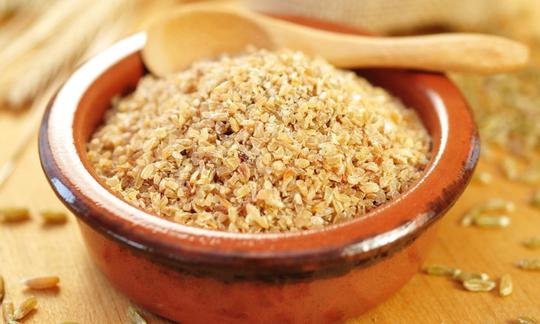

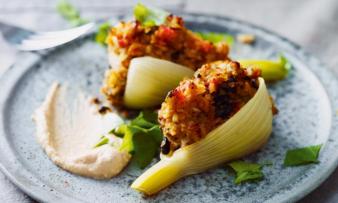
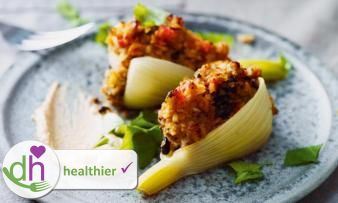
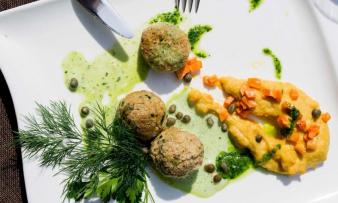

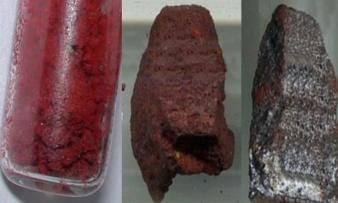



Comments